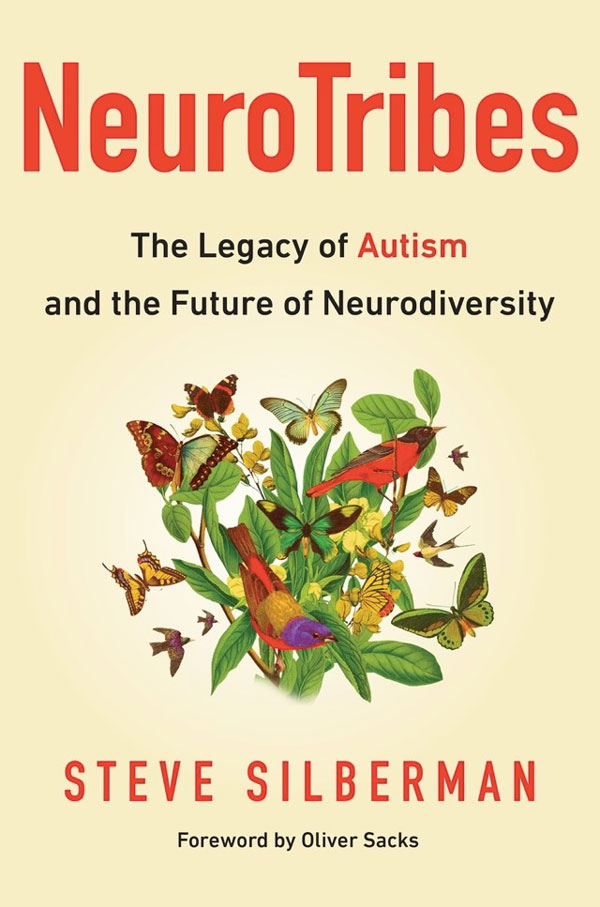THIS ARTICLE IS MORE THAN FIVE YEARS OLD
This article is more than five years old. Autism research — and science in general — is constantly evolving, so older articles may contain information or theories that have been reevaluated since their original publication date.
 Fifteen years ago, Steve Silberman was hot on the investigative trail of a “mysterious rise” in autism diagnoses in California’s Silicon Valley. While writing for Wired magazine, he learned that one of Silicon Valley’s most famous coders has an autistic child. Months later, he learned that the sister of one of Silicon Valley’s most famous entrepreneurs also has an autistic child. Assuming the prevalence of autism was low, Silberman thought he had stumbled onto cause and effect.
Fifteen years ago, Steve Silberman was hot on the investigative trail of a “mysterious rise” in autism diagnoses in California’s Silicon Valley. While writing for Wired magazine, he learned that one of Silicon Valley’s most famous coders has an autistic child. Months later, he learned that the sister of one of Silicon Valley’s most famous entrepreneurs also has an autistic child. Assuming the prevalence of autism was low, Silberman thought he had stumbled onto cause and effect.
Silberman’s new book, “Neurotribes,” recounts his quest to understand, as the book’s subtitle states, “the legacy of autism and the future of neurodiversity.”Unraveling the legacy consumes the lion’s share of the book’s 500 pages.
Writing in the style of historian Doris Kearns Goodwin, Silberman paints beautiful biographical portraits through prose. Henry Cavendish, Hugo Gernsback (née: Gernsbacher), Hans Asperger, Leo Kanner, Bruno Bettelheim, Bernard Rimland and Lorna Wing each receive chapter-length portraits. Contemporary characters, including Temple Grandin, Jim Sinclair and Leo Rosa, are painted on smaller canvases. But the narrative strokes are just as detailed, reminiscent of the writing of Oliver Sacks, who penned the book’s foreword.
Through his 15-year investigation, the fundamental principle Silberman learns is that autism is best viewed “as a lifelong disability that deserves support, rather than as a disease of children that can be cured.” Although this perspective seems like “a new and radical idea,” Silberman discovers that “it was the oldest idea in autism research. But it had been forgotten.”
Silberman also discovers that the Feminine Boy Project, led by O. Ivar Lovaas and George Rekers with the aim of making transgender children indistinguishable from their cisgender peers using Applied Behavioral Analysis, was funded by the Playboy Foundation, as well as the National Institutes of Health. Silberman learns that the original ending for the movie “Rain Man” had Raymond Babbitt leaving the institution to go live happily ever after with his brother.
Perhaps most profoundly, Silberman discovers that the intended conception of the autism spectrum by its founder, autism researcher Lorna Wing, was a bona fide spectrum, not a continuum.
Over time, Lorna lost her taste for the word continuum because it suggested an incremental gradient of severity, from least to most severe, while she was suggesting something more individualized, nuanced, and multidimensional. … Ultimately she adopted the term autism spectrum. She liked the sound of it, which evoked pleasing images of rainbows.
It is unfortunate that the autism spectrum has come to mean precisely the opposite of what its founder intended. Common vernacular speaks of the autism spectrum as a linear continuum, with a high end that’s desirable and a low end that’s undesirable. Silberman himself tries to sidestep the stigmatizing terms, ‘high functioning’ and ‘low functioning’ (not to mention the equally offensive ‘not as high functioning’). Such terms of gradation harken back to the eugenics era, during which, as Silberman notes, disabled persons’ disposability was also graded with terms such as ‘high-grade’ and ‘low-grade’ imbecile.
It is ironic that when Lorna Wing’s concept of the autism spectrum finally made its way into the “Diagnostic and Statistical Manual of Mental Disorders” (DSM-5), it did so in exactly the opposite way from how its founder intended. As Silberman’s painstaking research and fascinating interviews tell us, Wing wanted to avoid an incremental gradient of severity. Unfortunately, the DSM-5 does just that.
As the example of the origin of the autism spectrum illustrates, Silberman’s “Neurotribes” is a historical tour-de-force that anyone interested in unraveling the legacy of autism is sure to enjoy.
Morton Ann GernsbacherisVilas Research Professor and the Sir Frederic C. Bartlett Professor of Psychology at the University of Wisconsin–Madison.
By joining the discussion, you agree to our privacy policy.